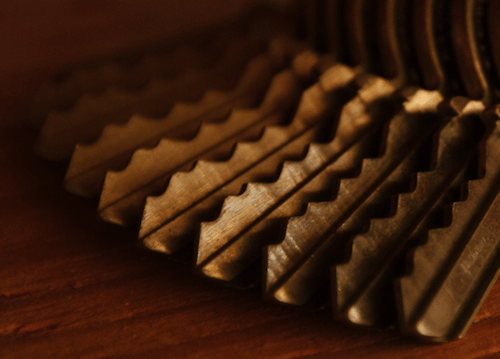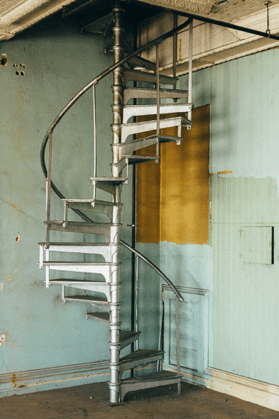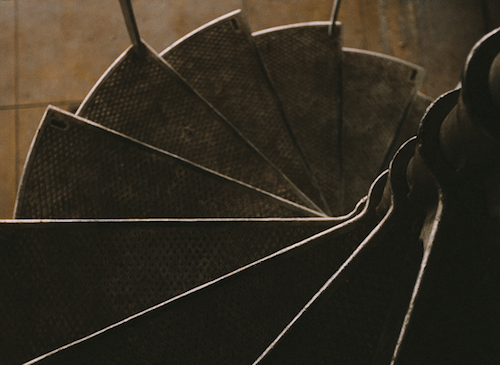As a photographer, you have the ability to document the world around you.
But you can also do so much more…
You have the power to transform something ugly or mundane into truly beautiful art.
Whether you’re looking at a pile of rusty metal, a rundown shed with peeling paint, or a crack in the sidewalk, you can show the beauty in the most unlikely of subjects with your camera in hand.
As an example, here’s a shot I took of a ring of keys:

I love how, through the magic of photography, it’s possible to turn simple, ordinary, and everyday objects into compelling images.
Here’s another example. I really liked the arc of this staircase I found in an old, run-down building…

So I had a lot of fun playing with angles and perspective to create this photo below:

Images like the ones above begin to enter the genre of abstract photography as they become less about what the subject actually is and more about the elements of artistic design.
This is where anything can be made beautiful.
Abstract images are all about line, shape, pattern, color, texture, light, and form. How you arrange these types of elements within your frame will determine how the viewer perceives your photo.
My advice for creating photos that verge on the abstract is to get as close as possible and work the shot.
Get close to your subject
Generally speaking, the more you exclude from your frame, the more abstract your image will become. If you avoid including your whole subject and its surroundings, there will be fewer visual clues to key the viewer in to what the subject really is. At this point, the image becomes more about the details the viewer can see, regardless of what the subject actually is.

How close should you get? I’d say as close as your lens will let you physically focus. Depending on your lens, this may be a few inches, or it may be several feet. Experiment with each of the lenses you own to figure out how close you can get and still achieve proper focus. Many lenses have the minimum focusing distance conveniently printed right on the lens barrel.
If you own a macro lens, this is the perfect time to break it out, because macro lenses let you get extremely close to your subject while still being able to focus.
Work the shot
Experiment with camera angles. Figure out which detail is the most important part of your subject and then work with your composition to make that detail stand out to the viewer. Try every angle, including getting down low and also getting above your subject.
It may also be helpful to try using a wide aperture opening, such as f/2.8 or f/4, to create a soft, blurred background as I did in these two images:

By getting in close and working the shot, you’ll be able to transform even the most common of subjects into beautiful, abstract photographs. And once you learn this technique, you’ll definitely never run out of interesting things to photograph, no matter where you are.
[Editor’s Note: Learn more about how you can fund your travels and make an extra income with photography, travel writing, blogging, and more in our free online newsletter The Right Way to Travel. Sign up here today and we’ll send you a new report, Five Fun Ways To Get Paid To Travel: A Quick-Start Guide, completely FREE.]
